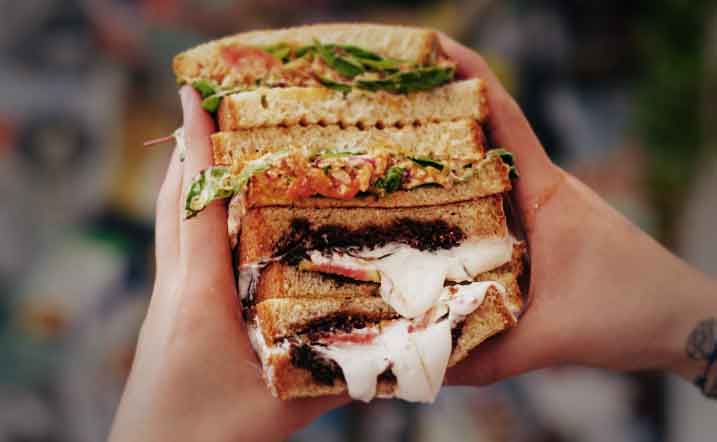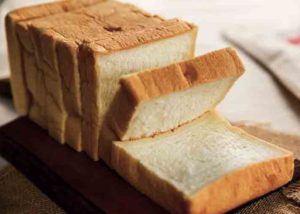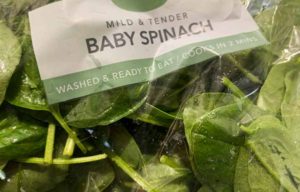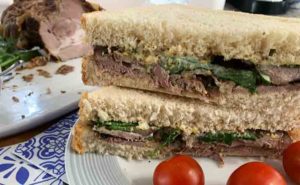This page may have Commerce Content. If you buy something from our posts, we may get a small share of the sale.

How To Keep Sandwiches From Getting Soggy
Discover how to keep sandwiches from getting soggy with these practical tips that anyone can use to avoid the dreaded soggy bread in their sandwich.
Sandwiches still remain a favorite for most people for good reasons. For one, it’s quick and easy to eat. You can prepare it in advance. And, you have an almost limitless variety, thanks to the many different ingredients you can use.
While it’s true that almost everyone loves a good sandwich, the thing that most people don’t like is a soggy one. Thankfully, there are plenty of things you can do to avoid such a dreaded meal.
Use Condiments Liberally
It might sound counterintuitive, but generously using condiments like hummus, pesto, mustard, or mayo can help in preventing your sandwich from getting soggy.
Your condiment spread acts as a barrier between the bread and veggies, cheese, or meat that will cause your bread to get soggy. Furthermore, the condiment will help in keeping moisture away from the bread.
Butter Is Your Friend
Aside from the usual condiments, butter is another addition you want to put on your bread.
Butter is mostly oil, which means it prevents water and moisture from seeping into your bread.
Pack And Assemble
If you really want to make sure that your sandwich won’t be soggy when you open your lunch bag, then perhaps the best way to ensure that is to pack the bread and your fillings separately.
It may take a bit of work, but it’s definitely worth doing if a soggy sandwich makes you lose your appetite. This tactic also works well if you have a moist filling like egg salad, chicken, or tuna.
Bread Alternatives
If you are open to the idea of not using sandwich bread, then you have other options that won’t turn soggy so quickly. For example, you can use tortilla, ciabatta, crusty, or baguette.
Toast Your Bread
If you really want to use sandwich bread, then another thing you can do is to toast it before you place your fillings. You probably think that it’s pointless because it will just lose its crunch by the time you eat it. That’s true, but that’s not the primary goal.
When you toast your bread, it forms a thin external layer of slightly burnt bread. This layer then becomes a barrier to prevent moisture and water from seeping in.
Healthy Bread Alternative
Aside from other bread alternatives, there are also other options you can use for wrapping your lunch. You can try a healthier alternative by using greens.
Most people don’t realize that there are leaves that can work really well as a wrapper. Kale, chard, and collards are a few plants with large and sturdy leaves that work well.
The excellent thing about using greens as a wrapper is not only is it less likely to get soggy, but you are also eating a lot healthier.
Avoid Warm Ingredients
A good tip to keep in mind for avoiding a soggy sandwich is to avoid using hot or warm ingredients. The reason why you’d want to do this is that warm or hot ingredients tend to produce condensation, which will then seep into the bread and then making it soggy.
Hence, you’d want to let the ingredients cool down to room temperature before placing them in your sandwich.
As an alternative, you can use ingredients that come straight from the refrigerator to avoid the condensation issue. It’s unlikely that the ingredients will still be cold by the time you eat it. But if it does, you can do a quick heat-up by placing it in a microwave.
Avoid Using Ingredients That Are Too Wet
If you are using greens in your sandwich, you should wash and clean them. However, it would be best if you let them dry a bit before placing them in the sandwich. That extra water and moisture need somewhere to go, and it’s likely that it will end up in the bread.
Wrapping It All Up
If your goal is to prevent your sandwich from getting soggy, the key is not to let the bread get wet.
There are plenty of ways of achieving this, like spreading butter to form a thin layer of oil. You can also use thick condiments so water and moisture won’t invade the bread.
You also have other indirect ways of getting a soggy sandwich. For example, you can use other bread that is not too “spongy,” like tortillas or crusty bread. Or, you can ditch the bread and use sturdy leaves as your wrapper.
There are other tips that you can employ. Just remember, keep moisture and water away from the bread, and you’ll less likely to end up with a soggy sandwich.
Popular Posts






